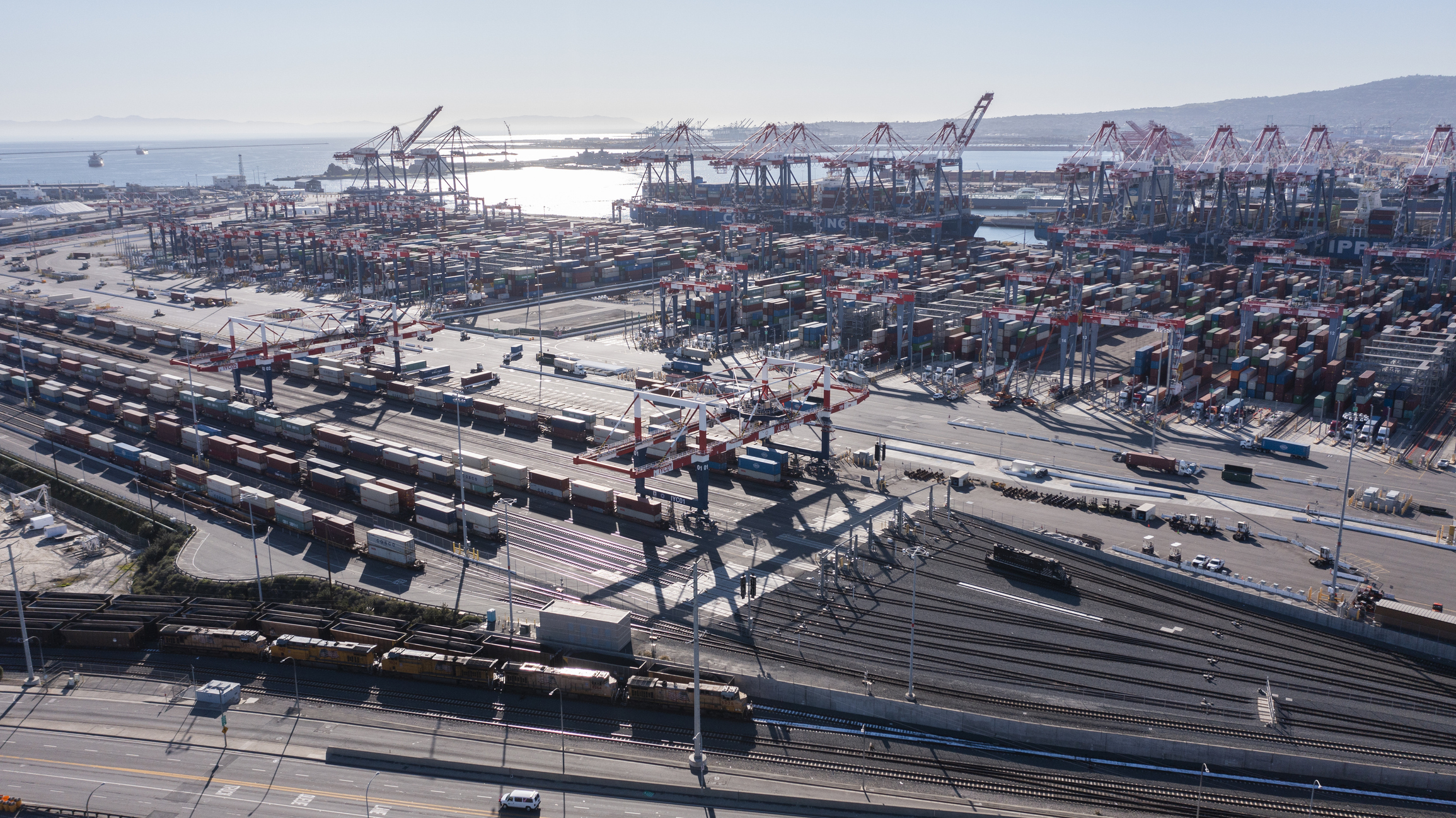The ports of Los Angeles and Long Beach have closed their busiest quarters on record, surpassing even the volumes achieved during the pandemic-driven surge, as shippers moved cargo ahead of traditional peak season and in response to disruptions in the global supply chain.
In September, the Port of Los Angeles handled a record-breaking 954,706 Twenty-Foot Equivalent Units (TEUs), marking a 27% increase from the previous year. This achievement capped the busiest quarter ever for the port, with 2,854,904 TEUs processed between July and September.
“Just as impressive as these new records is the fact that we managed all this cargo with skill and efficiency,” said Gene Seroka, Executive Director of the Port of Los Angeles. “None of this would be possible without the incredible efforts of our longshore workers, truckers, terminal and rail operators, and other supply chain partners. Their hard work has allowed us to achieve all these records and still be able to handle additional volume.”
Los Angeles’ September imports surged to 497,803 TEUs, a 26% increase compared to last year, while exports dipped 5% to 114,702 TEUs. Empty container movement jumped by 45% to 342,201 TEUs. Over the first nine months of 2024, the port moved 7,586,395 TEUs—an 18% increase over 2023.
Port of Long Beach’s Record Quarter
Next door at the Port of Long Beach, last month marked its busiest September ever, closing a historic quarter fueled by a rush to move holiday-related goods. The port processed 829,499 TEUs in September, surpassing the previous September record set in 2023 by just 70 TEUs, making it the fourth consecutive month of year-over-year cargo growth.
Imports at Long Beach increased by 2% to 416,999 TEUs in September, while exports fell by 12.8% to 88,289 TEUs. The port also saw a 1.5% rise in empty containers, reaching 324,211 TEUs. Notably, September was the fourth consecutive month where loaded imports exceeded 400,000 TEUs.
“We have plenty of room across our terminals as the peak shipping season drives a record amount of cargo through this critical gateway for trans-Pacific trade,” said Mario Cordero, CEO of the Port of Long Beach. “We are anticipating continued growth through the rest of the year as retailers stock the shelves for the winter holidays.”
Long Beach has been riding a wave of growth in recent months. August set an all-time record for monthly cargo volume, with the port handling 913,873 TEUs—a 33.9% year-over-year increase. This came on the heels of a record-breaking July, which was the third-busiest month in the port’s history. The port also posted its busiest June ever, with imports skyrocketing 53%.
Similarly, the Port of Los Angeles has marked three consecutive months of robust growth, driven by surging imports.
Labor Strikes and Supply Chain Pressures
The surge in cargo at both ports was driven in part by shippers facing a labor contract deadline at East and Gulf Coast ports, which led to a three-day strike at the start of October.
Despite the brief disruption, the National Retail Federation (NRF) expects imports at major U.S. container ports to remain elevated despite brief disruption. September imports are projected at 2.29 million TEUs, a 12.9% increase from last year, while October is forecast at 2.12 million TEU, a 3.1% increase.
With the busiest quarter in their history now behind them, both ports are poised for continued growth through the end of the year, despite the challenges posed by labor strikes and ongoing supply chain disruptions.
The NRF projects modest year-over-year increases in November and December, potentially bringing total U.S. container imports in 2024 to 24.9 million TEU, a 12.1% rise from 2023. These projections align with the NRF’s forecast of 2.5% to 3.5% growth in core retail sales for 2024.
“Our ability to work with industry and workforce partners allows us to move large volumes of cargo reliably, quickly, and sustainably,” said Bonnie Lowenthal, President of the Long Beach Harbor Commission. “We continue to deliver strong customer service to meet the needs of consumers and the national supply chain.”
Copyright : https://gcaptain.com/los-angeles-and-long-beach-ports-just-smashed-pandemic-era-cargo-volumes/


